 Zodiac Birth Symbol Astrology Calculator
Zodiac Birth Symbol Astrology Calculator

Astrological Calculator
What is Your Sign?
A Basic Guide to Astrology and the Zodiac
Since time immemorial, we’ve looked up to the Heavens to determine our fates. The positions of the planets and stars are predictable year round. They also take centuries to change. And ancient people around the world noticed this and began to study the stars.
At the same time, these same people started to wonder if the Heavens could tell us something more. Ancient cultures saw them as signs from the gods or a portent of cosmic powers. Thus, finding out the meanings and supposed effects became essential. Astrology, as we now call it, became a topic of interest for centuries. People still maintain an interest in astrology today.
Written in the Stars
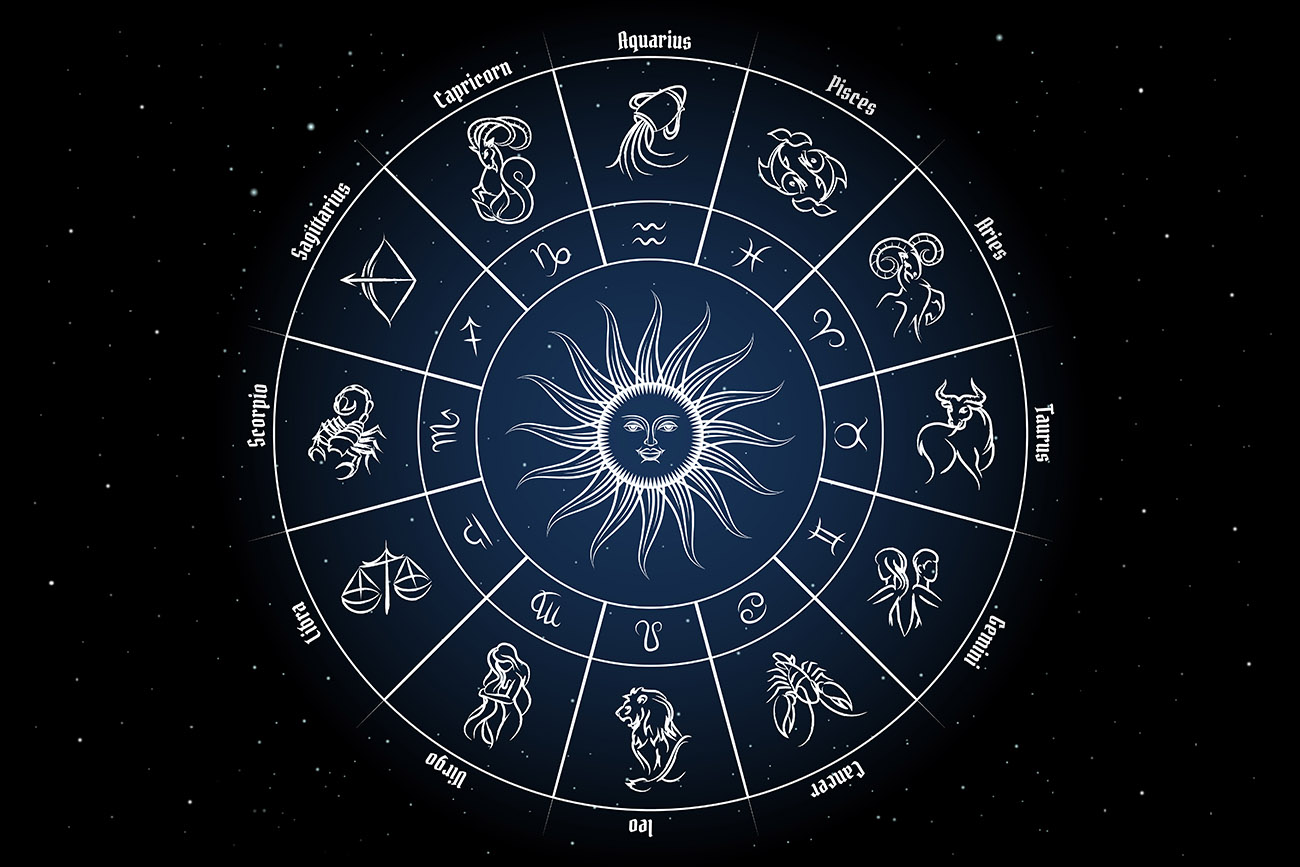
Astrology believes that the alignment of stars and planets affect human affairs. Many cultures around the world have their own version of astrology. Ancient people believed they could predict major events based on patterns in the sky. And to an extent, they were right. Many of the seasons do coincide with the positions of the stars and planets. The ancient world produced many accurate calendars based on these movements. And if you can predict the seasons through the stars, what else can you predict?
Priests and court magicians made meticulous records of celestial appearances. They charted the paths of the stars, planets, and the moon. With these details, they could make accurate predictions of the appearance of eclipses. They also recorded unusual celestial activity they saw. Some notable sights include comets and exploding stars (supernovae). Many of these records remain important to scientists today.
Astrology versus Astronomy
The modern science of astronomy developed alongside astrology. In antiquity, the astrologer and astronomer were often one and the same. Many astrological traditions also had strong ties to religion. This could be seen in how observatories were often incorporated into places of worship. Observations of the stars and their movements were essential for predicting and anticipating future events. Over the centuries, the two disciplines separated. Astronomers started to favor observation and measurable data. Astrology could not replicate the same results. Over time, it gradually fell out of favor in academia. Astronomy, meanwhile, became a respected science.
Astronomy’s main distinction is its reliance on empirical data. It bases its statements on what it observes and compares it with what other scientists have known and tested. No evidence exists that zodiac signs and positions have any effect on human life. Indeed, Astronomers today try to distance themselves from astrology and its associated beliefs. Repeated tests have found astrologers to be unreliable and inaccurate.
That said, astronomy does predict future events. But it relies on extrapolating on past events, observation, and measurable evidence. It does not attribute changes to events on vague, ill-defined powers. Nor will the changes always affect you on a personal level. An astronomer might predict behaviors in the sun that will cause the weather to be hotter. This might affect your weekend plans, but it won’t affect your personality or love life.
Astrology in the Near East
Western Astrology can trace its roots to the astrologers of Mesopotamia (modern Iraq) and Egypt. The influence of these two cultures diffused throughout the Near East and Mediterranean. Eventually, they came to shape the religious and scientific teaching in Ancient Greece.
The ancient Mesopotamians first devised the systems used in Western Astrology today. They imagined the night sky to form a circle, and divided it according to 12 parts. The system they used to divide circles is still used today. The Ancient Mesopotamians believed that stars and patterns preceded significant events.
Meanwhile, Egypt developed its own astrological traditions. They held the movements of specific stars in deep religious reverence. Egyptian priests timed their rituals with the movement of the planets. The stars also had a practical significance for the people of Ancient Egypt. The people used the stars to record the inundation of the Nile, a vital event in agriculture. However, Egyptian star charts were linear.
Both regions came into Greek influence after Alexander the Great’s wars of conquest. Greeks assimilated many of these same traditions into their own systems. Egyptian priests did likewise. They depicted the Greek constellations but presented them as Egyptian gods. This fusion can be seen in the Dendera Zodiac, made during Cleopatra VII‘s reign. This zodiac chart was the first known circular depiction of the constellations from Egypt.
Translation Convention
Much of what we know of ancient Greek science and astrology came to us from the Romans and the Arabs. They preserved Greek literature and added to it. Today we know the constellations by their names in the Roman language, Latin. The stars, meanwhile, often took on names in Latin and Arabic.
Astrology in China
Chinese astrology developed independently of those in Europe and the Middle East. The earliest record of the modern astrological traditions date as far back as 2,000 years ago. By the Han Dynasty (206 B.C.E. to 9 C.E.), the Chinese Zodiac cycle had taken on its modern form. The tradition is much older, dating back to the Shang Dynasty. Scholars dated some of the earliest oracle bones to as early as 1,250 BCE.
Legend holds that the Chinese astrology began in 4,000 BCE, in the reign of the Yellow Emperor. Tradition holds that Ta Nao, a minister to the Yellow Emperor, created the Eastern Calendar. Accurate calendars and star charts were important to the Imperial Chinese state. Chinese scholars must ensure that their data was as accurate as could be.
In Ancient China, there was a strong tie between the well-being of the empire and celestial favor. To ensure this, the emperors must carry out important rituals at specific times of year. Astrologers served an invaluable purpose in reading the signs from the gods. Any omen (and calamities that follow) could show that the emperor has fallen out of favor with the divine. In the Ming and Qing dynasties, the emperor performed these ceremonies at the Temple of Heaven.
Chinese astrology influenced the astrological traditions of neighboring countries. The Eastern zodiac is as popular today as its Western counterpart.

Did You Know?
People in antiquity thought that celestial events (comets, eclipses, and supernovas) were portents of dark times to come. The sudden and unexpected appearance of comets and supernovas were especially frightening. Keeping meticulous records helped ancient civilizations expect the coming of the next omen. This way, they believed they could prepare for the worst of it.
Astrology in India
Ancient India had a long tradition of philosophy and folk knowledge during the Vedic Age. Contact with the Ancient Greeks following Alexander’s conquest brought with it Greek knowledge. Indian scholars and priests brought local and Greek ideas together.
Today, Hindu Astrology (jyotisha) still shares many features with its Western counterpart. Despite this influence, it remains unique in many ways. The Greeks and Indians share many of the same constellations in the Zodiac. However, Hindu astrology instead utilizes a sidereal system. This system bases the length of each sign on the constellation’s size. Jyotisha includes many sub-systems of interpretation with no counterpart in the Western system.
The word Jjotisha comes from the Sanskrit word jyoti, which means light or heavenly body. It is one of the six auxiliary disciplines of Hinduism called vedangas. These works play a key part in the modern study of the Vedas, the sacred texts of Hinduism. Westerners may sometimes encounter Jyotisha as Vedic Astrology but this is a misnomer. Jyotisha was not mentioned in the Vedas themselves. Many scholars believe that this was a refinement added several centuries afterward.
Jyotisha plays an important role in Hindu religious life. The system helps determine the proper time for Vedic rituals. In India, Jyotisha remains an important field of study. Then and now, mathematics is an important component in Hindu Astrology. Finding out the duration of each of the signs demands precise calculations. The best examples of ancient Indian mathematics are found in books of astrology.
The Constellation Connection
Constellations are imaginary patterns of stars seen in the night sky. Most constellations people know today were first named by the Ancient Greeks. Today, we know them by the names the Romans gave them. Many of the constellations had myths around them. The Greeks believed that the gods honored heroes of the past by placing pictures of them in the sky.
A core part of many astrological disciplines in the West is the zodiac. This refers to a cycle of twelve constellations forming a circle in the night sky. Many different cultures have their own names for these constellations. The most well known today are those established by the ancient Greeks. The word zodiac itself comes from the Greek phrase kyklos zodiakos “cycle of the little animals.”
In Western astrology, the zodiac determines your sun sign. This refers to the position of the sun on the zodiac chart on your birthday. This is the most well-known type of astrological sign due to its predictability. The moon also passes through the constellations of the zodiac. Thus, you can also identify an astrological sign based on the lunar cycle. Note that the moon’s orbit around Earth doesn’t line up to the year. Hence your moon sign will vary.
The Ecliptic
The zodiac forms an imaginary band centered around the ecliptic. This is the apparent path the sun takes as it moves through the sky. In truth, it is the Earth that moves. For a brief time each year, the sun’s path lines up to one of the constellations in the cycle. But your sun sign is not dependent on when the sun crosses paths with a constellation.
Each division of the zodiac consists of 30 equal degrees of celestial longitude. These divisions do not correspond to the actual size of the constellations. Looking at a star chart will reveal why this is so. Compare the size of Virgo, one of the larger constellations, to tiny Libra. The zodiacal cycle begins with the Point of Aries (0 degrees), which begins on the Spring (or Vernal) Equinox. This is when the Sun appears to pass over the Earth’s equator. The Vernal Equinox happens on or around the 21st of March.
Moreover, the position of each constellation changes over the centuries. This is because of a cycle of shifts in the Earth’s axis called a precession. Each one lasts over 25,800 years. The present constellations have not lined up to the zodiacal divisions in over 2,000 years. At present, the Sun passes through Sagittarius on the first of January. But if you were born on that day, you will still be a Capricorn.
This system, called Tropical Astrology, is the one most people are familiar with. When people ask for “their star sign,” it’s often this. The zodiacal cycle always starts on March 21 regardless of other conditions. Other astrologers, including those of the Indian school, follow the sidereal system. The dates they use line up better with the actual position of the constellations. Compare the sidereal dates to those defined by the International Astronomical Union in 1930:
| Name | Symbol | Tropical zodiac | Sidereal zodiac | Name | IAU boundaries | Solar stay | Brightest star |
|---|---|---|---|---|---|---|---|
| Aries | ♈ |
21 Mar – 20 Apr | 15 Apr – 15 May | Aries | 19 Apr – 13 May | 25 days | Hamal |
| Taurus | ♉ |
20 Apr – 21 May | 16 May –15 Jun | Taurus | 14 May – 19 Jun | 37 days | Aldebaran |
| Gemini | ♊ |
21 May – 21 Jun | 16 Jun –15 Jul | Gemini | 20 Jun – 20 Jul | 31 days | Pollux |
| Cancer | ♋ |
21 Jun – 23 Jul | 16 Jul – 15 Aug | Cancer | 21 Jul – 9 Aug | 20 days | Al Tarf |
| Leo | ♌ |
23 Jul – 23 Aug | 16 Aug – 15 Sep | Leo | 10 Aug – 15 Sep | 37 days | Regulus |
| Virgo | ♍ |
23 Aug – 23 Sep | 16 Sep – 15 Oct | Virgo | 16 Sep – 30 Oct | 45 days | Spica |
| Libra | ♎ |
23 Sep – 23 Oct | 16 Oct – 16 Nov | Libra | 31 Oct – 22 Nov | 23 days | Zubeneschamali |
| Scorpio | ♏ |
23 Oct – 22 Nov | 17 Nov – 15 Dec | Scorpius | 23 Nov – 29 Nov | 7 days | Antares |
| Ophiuchus | ⛎ |
N/A | Ophiuchus | 30 Nov – 17 Dec | 18 days | Rasalhague | |
| Sagittarius | ♐ |
22 Nov – 22 Dec | 16 Dec – 14 Jan | Sagittarius | 18 Dec – 18 Jan | 32 days | Kaus Australis |
| Capricorn | ♑ |
22 Dec – 20 Jan | 15 Jan –14-Feb | Capricornus | 19 Jan – 15 Feb | 28 days | Deneb Algedi |
| Aquarius | ♒ |
20 Jan – 19 Feb | 15 Feb – 14 Mar | Aquarius | 16 Feb – 11 Mar | 24 days | Sadalsuud |
| Pisces | ♓ |
19 Feb – 21 Mar | 15 Mar – 14 Apr | Pisces | 12 Mar – 18 Apr | 38 days | Eta Piscium |
Sign |
Constellation |
||||||
A Word on Ophiuchus
The Sun sometimes appears to pass through another constellation, Ophiuchus, the snake-bearer, through its movements in the sky. Modern popular culture sometimes names this constellation as a new sign whenever it does. However, traditional and sidereal astrologers do not include Ophiuchus in their lists. In fiction, someone having Ophiuchus as their sun sign is usually a portent of some sort. Some characters get special powers from it.

Ruling Planets and Elements
There’s more to the zodiac than just your signs. Though not considered a science, astrology is still a complex discipline. Its internal rules demand a lot of math and stellar observation. Your sun sign is the simplest of the bunch, but the full package also includes other factors.
One of the four classical elements (fire, water, air, and earth) rules each of the signs. Each element reflects a personality type:
| Element | Personality |
|---|---|
| Fire | Passionate |
| Air | Intellectual |
| Water | Emotional |
| Earth | Practical |
The signs also fall under three attributes: cardinal, mutable, and fixed. The cardinal attribute represents a pioneering spirit that induces change. The fixed attribute is constant and resists change. The mutable attribute, meanwhile is receptive to change.
Finally, each of the signs has a ruling planet. Today, the ruling planets comprise all seven remaining planets plus Pluto. Western Astrology also considers the sun and moon (the luminaries) as part of the list. In the past, astrologers only knew of the five planets visible to the naked eye. Thus, they named each of the planets as rulers of two constellations. The luminaries, they said, ruled over one. Over time, scientists later discovered more planets. Modern astrologers thus named the next two planets and Pluto as co-rulers of three signs. Mars and Venus, the two closest planets to Earth, still rule over two constellations.
In the chart below, entries marked with an asterisk (*) denote former rulers.
| Sign | Epithet | Ruling Planet or Luminary | Ruling Element | Quality |
|---|---|---|---|---|
| Aries | The Ram | Mars | Fire | Cardinal |
| Taurus | The Bull | Venus | Earth | Fixed |
| Gemini | The Twins | Mercury | Air | Mutable |
| Cancer | The Crab | The Moon | Water | Cardinal |
| Leo | The Lion | The Sun | Fire | Fixed |
| Virgo | The Virgin | Mercury | Earth | Mutable |
| Scorpio | The Scorpion | Venus | Air | Cardinal |
| Libra | The Scales | Pluto, *Mars | Water | Fixed |
| Sagittarius | The Archer | Jupiter | Fire | Mutable |
| Capricorn | The Goat | Saturn | Earth | Cardinal |
| Aquarius | The Water Bearer | Uranus, *Saturn | Air | Fixed |
| Pisces | The Fish | Neptune, *Jupiter | Water | Mutable |
The Original Personality Test
In astrology, the position of the stars and planets on your birthday influences your personality. Each sign ties to a specific personality profile. This is not as rigid as it sounds. Even believers will admit that few people will match these personalities exactly. They describe those that do as “typical” of their sign.
In a sense, zodiac signs are an early attempt at a personality test, only with less flexibility. Today’s personality tests demand you answer questions about yourself to give a picture of what you’re like. At its most basic, tropical astrology needs only one question: your birthday.
A person born closer to the period of one sign or another has a cuspal sign. By name, they belong to one sign but may also have the traits of another. A person born on the 19th of January is a cuspal Capricorn. Meanwhile, a person born on the 21st will be a cuspal Aquarius.
Aries, The Ram

An Aries has initiative and isn’t afraid to blaze new trails. As a leader, they’re the type to get things started, though aren’t the ones to finish it. An Aries is competitive and lives for the thrill of the game. As friends, they are dependable, supportive, and loyal.
For all their assertiveness, the Aries tends to act on impulse. They are impatient and may not always be a good team player. They may also come across as blunt, thoughtless, or even cruel. An Aries may find it hard to convey ideas with others.
Taurus, The Bull
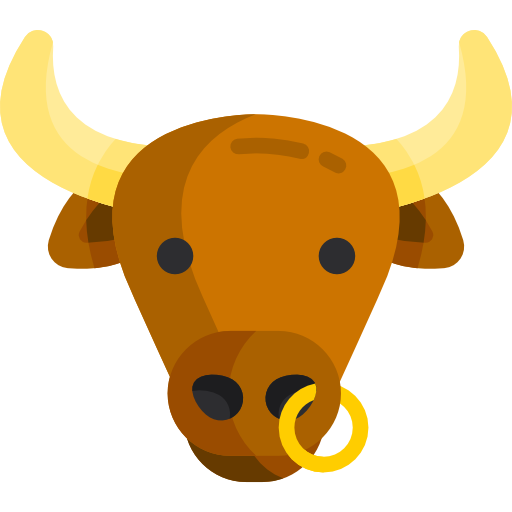
The Taurus comes across as hedonistic and sophisticated. They prefer the finer things in life and are quite dedicated to the things they do. As leaders, they are the type to see things through. They make loyal and dependable friends. A Taurus tends to be practical-minded, which influences their choices.
However, the Bull doesn’t always feel bullish. They are prone to losing motivation, which can leave them stuck in a rut. They tend to be conservative and unyielding to change and compromise. Their hedonism may lead to poor health habits, especially when it involves food and drink. They must be careful to avoid becoming controlling to the people they love.
Gemini, The Twins

Geminis are glib, imaginative, and intelligent. They have a lot to talk about and none of it is small talk. They love to learn about new things and new people. Geminis tend to be multi-talented and adapt to new environments with ease. They are often the life of a party. Moreover, Geminis collect sources of knowledge and often know how to spread it.
However, Geminis can come off as stuffy intellectuals. They may not always apply their great knowledge to anything practical. Being too adaptable may also lead others to view them with suspicion. Their ability to read people and find buttons to push can make them annoying. They must often learn to respect boundaries. Moreover, they risk spreading themselves out too thin.
Cancer, the Crab

People born under the sign of cancer are down-to-earth and family-oriented. They like being well-rooted in a single place. They are very welcoming, compassionate, and nurturing. They take life with caution and must read everything before they open up. This makes them sympathetic to others and trustworthy in the eyes of their friends. They see themselves as protectors and often root for the underdog.
However, the Cancerian may become mollycoddling and overprotective. They can become too controlling and vigilant in social situations. Their desire to care for others may also lead them to neglect self-care. The crabby Cancerian is slow to open up and may become unwelcoming of newcomers. They also have long memories and can hold immense grudges.
Leo, the Lion

Leos are ambitious, artistic, and charismatic. They love receiving praise and being the life of the party. As leaders, they are inspiring and motivate others through sheer charisma. They are a ray of sunshine for other people. Leos are also very generous. They share the spoils with the rest of the pride.
But the Lion can’t stand the idea of others hurting their pride. They are reluctant to admit to faults. At their worst, they can let their selfishness and vanity rule them. They may become ruthless in their ambitions. Moreover, Leos may harbor insecurities. Often, they become too dependent on constant praise for validation.
Virgo, the Virgin

Virgo lies at the center point of the cycle. Thus, they find ways to bring counterpoints together in compromise. As artisans, they are calculating and precise. They pay great attention to detail. Virgos have a connection to nature. Many are staunch conservationists and animal lovers. They are also compassionate and are always happy to help.
Active-minded Virgos might suffer from insomnia and insecurities. They might become too concerned with wanting to help and serve others. They may overestimate their issues and worry too much. Their attention to detail may also make them harsh critics of others and themselves. Directed inward, this may also harm their self-esteem.
Libra, the Scales

As befits the scales, Libras love balance and things in pairs. They put the fair treatment and wellbeing of others first. True to their symbol, they value justice and will listen to all sides before deciding. This trait makes them excellent leaders and diplomats. Libras are slow to anger and don’t hold grudges.
A Libra’s people-pleasing personality may become a problem if left unchecked. They may be less attuned to their own needs and might neglect self-care. Instead of expressing emotions at a grievance, they may instead become resentful. They may also overextend and over-commit, which leads them to underperform.
Scorpio, the Scorpion

Scorpios are courageous, calculating, and patient. The scorpion neither fits in nor wants to. They scuttle to the beat of their own drum. They are hard-working individuals known for their dependability. Scorpios are passionate lovers. They are fierce in their protection of their friends and loved ones. This sympathy extends to society’s underdogs. Scorpios relate to outsiders and are receptive to the people left behind by the rest of society.
However, they are also stubborn in the face of change. They are sometimes mistrustful of others and can be controlling in relationships. Their bravery also makes them prone to seeking out danger on purpose. Darker subjects and nihilistic world views attract the Scorpio. Thus, popular culture unfairly depicts them as largely villainous.
Sagittarius, the Archer
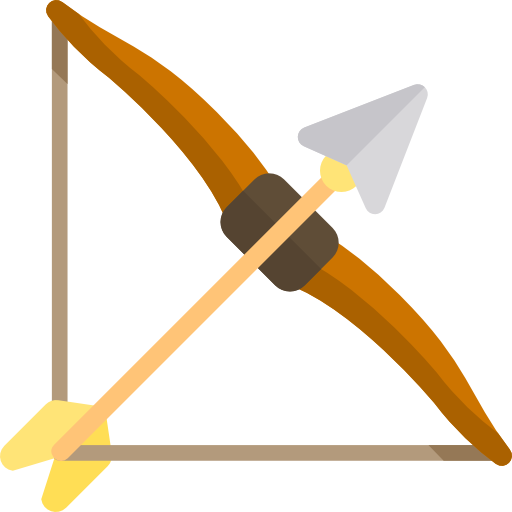
Sagittarians are natural explorers and trailblazers. They seek positive change and things that reflect their real selves. As a result, they resist fitting into roles they feel performative or inauthentic. The Sagittarian exudes self-confidence and often stands for what they believe is right. A Sagittarius aspires for lofty goals and rarely holds petty grudges. They are always on the move and have little time for materialism and attachment.
A Sagittarian is often outspoken. This applies when they’re convicted and when they’re changing their mind. Their passion doesn’t always go in a set direction. Thus, they come across as flakey, impulsive, and unreliable. They can also be overzealous in their idealism and may be unrealistic. Moreover, the Sagittarian is short-tempered and impatient. They may say hurtful things through brutal honesty.
Capricorn, the Goat
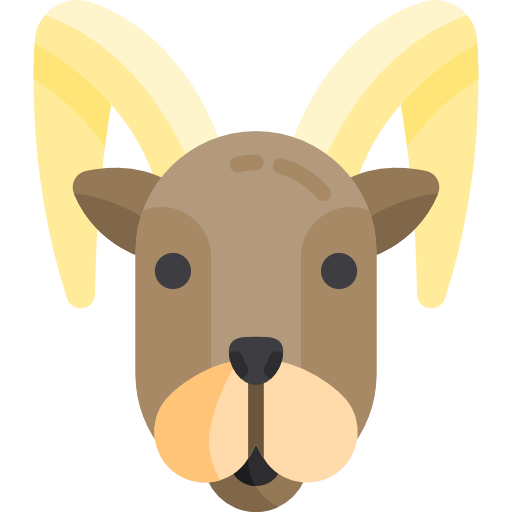
Capricorns endure by doing things their way. The stalwart goats expect excellence and commitment from themselves and others. Despite being goal-oriented, Capricorns are not humorless grumps. They are pragmatic and attuned to the flaws of human nature. This reflects their dark yet pleasant sense of humor. They seem to age in reverse. They start out as serious and reserved and embrace childlike joy as they grow up. They like being loners.
Capricorns can be narrow in their desire to see goals through. They may neglect to see the big picture or the effects of their actions. They may be harsh judges of those who don’t share their vision and work-ethic. The bitter old goat may be too unforgiving of other’s mistakes. They take too much pride in their independence and often see shame in asking for help. Their insistence on self-reliance may also alienate others.
Aquarius, the Water Bearer

The Aquarius is a firebrand visionary. They are creative, intelligent, and innovative. They are unafraid of new ideas and are quick to embrace them. They think outside the box and see things from a different perspective. This helps make them excellent judges of character as well. The Water Bearer carries on with life unchained to convention. They hold unpopular but often sober opinions on things. This gives them a dry wit. When things need to change, the Aquarius will be among the first to point it out.
The Aquarian’s call to intellectual pursuits makes them come off as aloof and distant. They may become so engrossed in the theoretical that they forget to relate to people in the real world. They may also become too judgmental and unforgiving. Aquarians may set too high a standard for others to reach. Without a noble goal to aspire to, the contrarian Aquarian becomes a rebel without a cause. Finally, the Aquarian might become insensitive and inconsiderate.
Pisces, the Fish

The Piscean is compassionate and artistic. They are receptive to the feelings of others. Throughout their lives, Pisceans seldom lose their childlike wonder. They aren’t very materialistic and have few attachments. They let go of things with ease and accept change. As lovers, Pisceans give their all and then some. Likewise, they also tend to see the same goodness in others.
Pisceans are sensitive souls and can get hurt with ease. Because they are so trusting, unscrupulous folk may take advantage of them. While they follow their bliss, they can’t always apply in a practical or profitable way. They may become neglectful of important details. In a relationship, they may become needy or codependent. They risk getting too distracted.
A Legacy of Myth
As the ancients observed the stars, they also spoke of epics, heroes, and villains. The ancients immortalized some of the most enduring stories of our time in the heavens. Many of the most well-known stories tied to the Western Zodiac came from the Greek and Roman myths. The Mesopotamian and Egyptian civilizations had similar constellations. Their traditions and legends in turn influenced the Greeks.
| Sign | Myth |
|---|---|
| Aries | The ram is the animal sacred to the Egyptian god Amun, the creator. He is sometimes fused with Ra, god of the Sun. In the Greek myths, a golden ram saved the princes Phrixus and Helle. Much later, the hero Jason and his Argonauts would seek the ram’s fleece. The ram appears as the eighth sign of the Eastern Zodiac. |
| Taurus | Many cultures across the globe have worshiped bulls and the power they have. Egyptians worshiped Apis, a sacred Bull, as the son of Hathor, goddess of Love. In the Greek myths, the god Zeus seduced the mortal Europa as a white bull. Their offspring was Minos, who ruled over the sophisticated island nation of Crete. The Ox appears in the Eastern Zodiac as the second sign. |
| Gemini | The constellation refers to Castor and Pollux, twin half-brothers who later became gods. Of the two, Pollux was immortal and was the son of Zeus. He later shared his immortality with his brother. The star named for him is the brightest star in the constellation. |
| Cancer | Cancer honors karkhinos, a crab living alongside the Hydra of Greek myth. He fought against the hero Hercules but was defeated. For that, the goddess Hera brought him to the sky. To the Ancient Egyptians, Cancer is a scarab beetle, a symbol of rebirth. He embodies Khepri, personification of the god Ra as the rising sun. |
| Leo | Leo is a reference to the Nemean Lion, an invincible beast in Greek myth. Only the hero Hercules could defeat the beast. Its star, Regulus, the little king, cements Leo’s significance in kingship. Some scholars theorize that Regulus lining up with the Planets Venus and Jupiter formed the “star” that heralded the birth of Jesus Christ. |
| Virgo | The constellation Virgo calls to mind the many goddesses of the harvest and plenty. The image of Virgo evokes Shala, the goddess of the harvest in Mesopotamian myth. This association carried over to the Greeks (as Demeter) and Romans (as Ceres). Medieval Christians associate Virgo with Mary, mother of Jesus. |
| Libra | Libra represents the Scales of Justice. Virgo and Libra taken together depict Themis, Greek goddess of Justice. The original constellation was of a woman holding the scales. This also recalls Ma’at, the Egyptian Goddess of Justice. The gods used her feather of truth to weigh the souls of dead people. |
| Scorpio | The Greek myths tell of a great scorpion sent by the Earth Goddess Gaia to challenge the hunter Orion. Orion, who nearly hunted all animals to extinction, fought the scorpion (and lost). Recalling the myth, Scorpius becomes more prominent as Orion sets in the horizon. |
| Sagittarius | Sagittarius is one of two constellations that honor Chiron the centaur. He was the tutor of great heroes like Hercules, Jason, Achilles, and Asclepius. The Greeks renowned him for his wisdom and his knowledge of medicine. His archery skills were also second to none. |
| Aquarius | Ancient cultures feared and revered annual floods. These often brought destruction and life-giving water and silt for farmers. In Mesopotamian myth, Aquarius represents the god Ea. He carried an overflowing jar of water for ritual cleansing. In Egypt, the constellation evoked Hapi, god of the Nile River. The Nile flooded each year, renewing the fertility of the land. In Greek myth, Aquarius recalls Ganymede, a prince chosen by Zeus to be the cupbearer of the gods. |
| Capricorn | In Mesopotamian myth, the god of water, Ea or Enki, took the form of a goat-horned being. He was also half-fish, hence the image of Capricornus as a mer-goat. To the Greeks, Capricornus represented the mother goat that took care of baby Zeus after he escaped from his father Cronos. |
| Pisces | In Greek and Roman myth, two fish came to save the Goddess Aphrodite and her son Eros from the monster Typhon. |
The Eastern Zodiac
Countries in East Asia follow a different zodiacal tradition. Like its Western counterpart, the Eastern Zodiac also consists of a cycle of 12 figures. This system, however, is independent of the ecliptic. Instead, it follows a group of sacred animals that represent a year in a cycle. The zodiacal cycle coincides with the orbit of Jupiter around the Sun, which lasts for almost 12 years.
The most popular version of the Eastern Zodiac comes from China. The animals represented are as follows:
| Sign | Years |
|---|---|
| Rat | 1960, 1972, 1984, 1996, 2008, 2020 |
| Ox | 1961, 1973, 1985, 1997, 2009, 2021 |
| Tiger | 1962, 1974, 1986, 1998, 2010, 2022 |
| Rabbit | 1963, 1975, 1987, 1999, 2011, 2023 |
| Dragon | 1964, 1976, 1988, 2000, 2012, 2024 |
| Snake | 1965, 1977, 1989, 2001, 2013, 2025 |
| Horse | 1966, 1978, 1990, 2002, 2014, 2026 |
| Ram | 1967, 1979, 1991, 2003, 2015, 2027 |
| Monkey | 1968, 1980, 1992, 2004, 2016, 2028 |
| Rooster | 1969, 1981, 1993, 2005, 2017, 2029 |
| Dog | 1970, 1982, 1994, 2006, 2018, 2030 |
| Pig | 1971, 1983, 1995, 2007, 2019, 2031 |
Note that many of these are subject to translation issues. Written Chinese does not always make the same distinctions between animals. For instance, the character for the ram could refer to either sheep or goats. Most Chinese depictions choose either one animal or the other, usually the goat. The character for rooster, meanwhile, refers to chickens regardless of gender. Often, it refers to the male.
Other Eastern Zodiacs resemble their Chinese counterpart, but may have different animals. The Korean and Japanese zodiacs follow an identical cycle but with different names. In Japan, the boar takes the place of the (domestic) pig. The Thai Zodiac swaps the dragon with the naga, a mythological snakelike creature. Meanwhile, the Vietnamese Zodiac replaces the rabbit with the cat.
The Chinese Zodiac cycle follows the lunisolar Chinese calendar. This means that its months follow the cycle of the moon. The calendar receives additions to keep it on track to the solar year. It does not always begin in January as with the Gregorian Calendar. In most years, Chinese New Year starts in February. For instance, anyone born from 27th of January 1990 to the 14th of February 1991 were born under the Year of the Horse.
Five elements rule over the Chinese Zodiac: water, wood, earth, metal, and fire. Each element has a ruling planet. All the signs have an endemic (or fixed) element, which are as follows:
| Water (Mercury) | Wood (Jupiter) | Fire (Mars) | Earth (Saturn) | Metal (Venus) |
|---|---|---|---|---|
| Rat | Tiger | Snake | Ox | Monkey |
| Pig | Rabbit | Horse | Dragon | Rooster |
| Sheep | ||||
| Dog | ||||
Each zodiac year also follows an element in a cycle. Returning to our previous example, 1990 was the year of the Metal Horse. Meanwhile, 2002 was the year of the Water Horse, and 2014 the year of the Wood Horse.
The Great Race
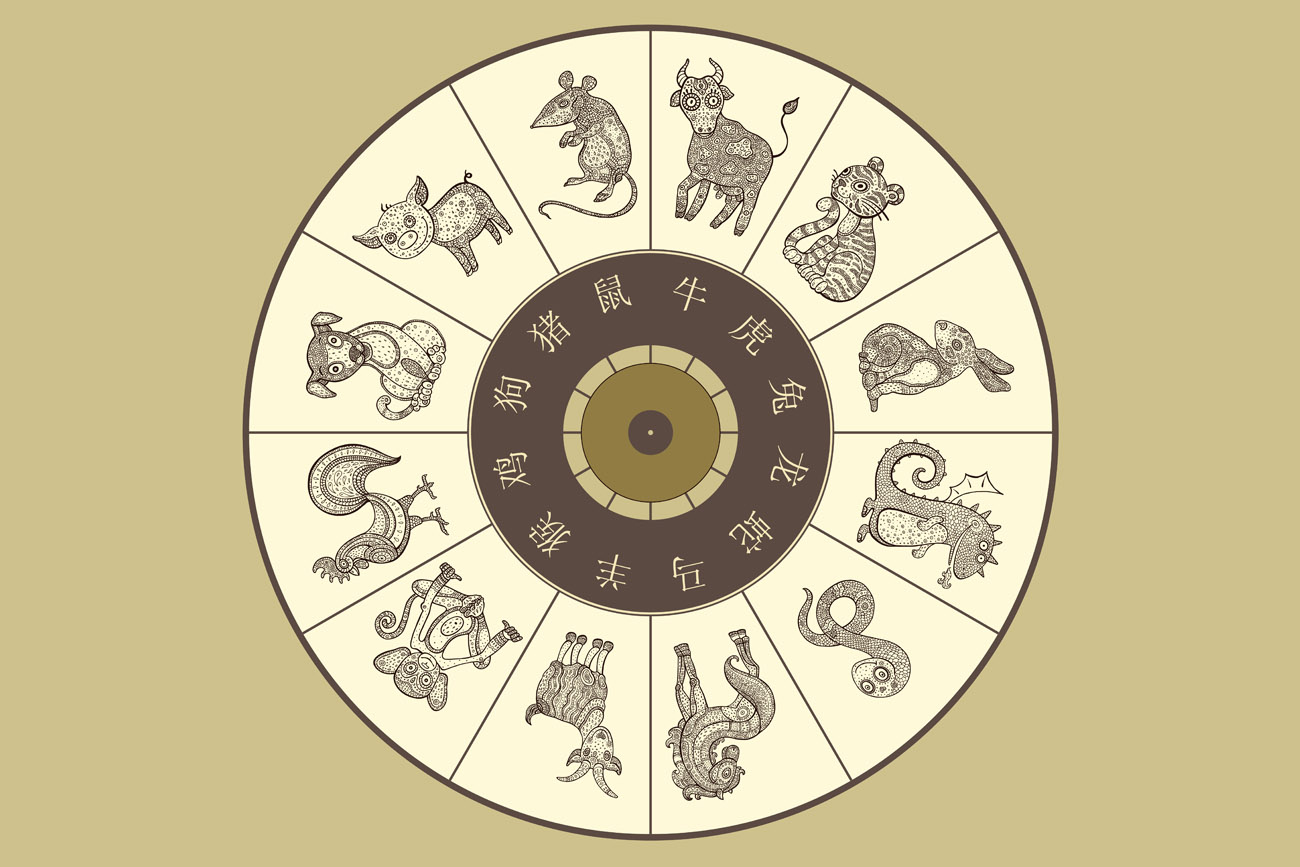
Among the many popular myths surrounding the Eastern Zodiac is the Great Race. There are many versions of the tale, but they all have many features in common. In most versions of the story, the Jade Emperor, ruler of Heaven, called the animals to a race. The first 12 would have the honor of representing the zodiac.
The rat, being crafty and small, won the race. One would think the dragon, the mightiest of creatures, would’ve won this race. But along the way, he encountered villagers plagued by a drought. Moved with compassion, the dragon gave up part of the way to bring the villagers rain. In some versions, he also saved the rabbit from drowning.
Why is the cat not included in the Chinese zodiac? The legends themselves vary, but they all have a common thread: the rat did it. In one version, they refused to wake the cat up to increase their odds of winning. Cats and rats have not gotten along ever since.
The Rat
The crafty, resourceful rat is the first animal in the Chinese zodiac for a reason. People born under the rat sign are true to their friends and loved ones. But they may also let ambition rule them. They are sociable, friendly, and talkative. Thus, rats love being the center of attention. Their desire for prosperity is often a means to an end rather than a goal.
Rats can come across as self-centered glory hounds, only out for themselves. Some may rely on crippling others to get ahead, as the rat in the Great Race had done. Even well-meaning rats may become controlling and mollycoddling toward their loved ones.
The Ox
Those born under this sign understand the importance of hard work and the good old ways. For them, morality is not negotiable. The good Ox does not bend to temptation with ease. They believe in persevering through hardship to get their reward. Oxen direct their efforts inward toward their herd. They are well-organized and practical, yet still very creative. Don’t let their serious demeanor fool you, they are sensitive lovers. Many also have a surprisingly good sense of humor.
The Ox, however, may be too conservative for their own good. They may be unreceptive of new ideas and unwelcoming of outsiders. They may be too preoccupied with getting what they want and not hesitate to use force to do so. Left unchecked, their own moral resolve may morph into narrow self-righteousness.
The Tiger
The Tiger is brave, confident, energetic, and very emotional. Leadership comes natural to those born under the sign of the charismatic cat. They tend to dominate the fields they’re in either due to charisma, force, or both. As leaders, they often carry the group through perseverance. Tigers almost never give up, regardless of the obstacles in the way.
Of course, the tiger risks getting a massive ego. Tigers are not social cats. They’re not always receptive to feedback and may struggle with cooperation. Their bravado can also make them impulsive and short-sighted. A tiger should always keep their confidence and aggression in check.
The Rabbit
The rabbit is the most sensitive sign in the Chinese zodiac. They worry about getting hurt and letting others see their vulnerability. Above all things, they seek acceptance and love. This focus on emotions makes them excellent at relating to others. Those born under this sign make terrific diplomats and considerate leaders. Inside their warrens, rabbits can be refined and sophisticated. They love beautiful things and tend to be terrific artists.
Their desire for security may become a weakness. Rabbits risk losing opportunities because of their timidness. Pushed too hard, they may choose never to be hurt by others again even if it means going on a dark path. They might also let their own worries get in the way of helping or protecting others.
The Dragon
In ancient times, having a child born under this sign was auspicious. The dragon carries with them a charisma that follows them everywhere they go. With this power comes responsibility. The dragon is a driven perfectionist in everything they do. The ideal dragon is a paragon of virtue. They use their presence not to bully the weak or retaliate against their foes. They inspire and do great things.
Like a certain queen on TV, dragons are vulnerable to letting this power get into their heads. They tend to horde power if not kept in check. Dragon leaders risk becoming controlling and tyrannical. Their desire to do things their way makes them bossy and stubborn. They may also come off as haughty and arrogant, which can dent their charisma.
The Snake
Snakes are enigmatic and intuitive. People born under this mysterious sign are refined and frugal. The snake slithers to the beat of their own drum. They learn best not from instruction but from trial and error. They love beautiful and unconventional things. Good-natured snakes have a great sense of humor but dislike small talk. They don’t build connections as well as others, but they are loyal to the friends they do make. Snakes in leadership positions strike the balance between authority and freedom.
Snakes find it hard to forgive and will hold insane grudges as they plot revenge. They also tend to be materialistic and fixated on status. They may become envious of others who seem to have more than they have.
The Horse
The horse is active and energetic. Those born under this sign are sociable party animals. They love being around others, and others love being around them. They’ve also got a great sense of humor, to boot. Horses are a creative bunch and love facing new challenges. They’ve got plenty of initiative to get things going. However, they do find it challenging to see things through.
The outgoing nature of the horse has a flip side. They’re a touch too forward with their opinions at times. This can make them seem inappropriate and insensitive. They’re also impulsive and easy to startle. By nature, they crave new things, which can give them commitment issues. They may also come across as hedonistic and self-centered.
The Ram
Chinese astrology holds that people born under this sign are quite fortunate. Prosperity follows the ram, and so does friendship. Rams are friendly and personable characters. Many rams are kind and gentle. But they are also a people of contrasts. Many rams complement their retiring, milquetoast exterior with an inner resolve of steel. The ram might seem unassuming as just another sheep. But when the going gets tough, expect them to get going. Their skill sets tend to strike a balance between practical, technical, and artistic.
The main challenge of the rams is their need for space. To reach their full potential, they need an environment optimized for their growth. Their sheepish nature makes them hard to relate to. It takes a while before they open up to others. They don’t always respond to criticism well, regardless of intentions. Their good fortune also means they have a lot of clutter in their lives. Rams are also conflict-averse and might flake out when tensions rise.
The Monkey
The monkey is among the most intelligent of animals. People born in this primate sign are especially intelligent. And that’s not all. The monkey is fun-loving and gregarious, charismatic, and creative. They have decent leadership skills that make them excellent executives. The monkey is a natural problem-solver. Each new challenge is just another puzzle to play with. The money thrives in academia.
However, this quick-wittedness makes them prone to distraction. A monkey hyper-focuses on their pet intellectual pursuit. If not tempered, they may neglect a lot of other important things. The monkey should be careful about their ambitions. A misguided simian may start thinking that intelligence equals superiority. They may also be prone to jealousy of the things their intellect and guile can’t get them.
The Rooster
Some people believe that roosters are psychic. Others think that people born in this sign are merely more observant than others. The detectives of the Eastern Zodiac are resourceful and keen. They can make the best of any situation. When paired with fellow hard workers, they can do amazing things. Intelligent, brave, and charismatic, they make great strategists in groups. They also like keeping things in their place. It’s more efficient to be organized, after all. They like to preen themselves and tend to be well-groomed and well-dressed.
Roosters, however, can be insufferably cocky. When they do something big, they may never let you hear the end of it. They can’t abide by the idea that someone will steal their thunder. Roosters are also confrontational and use brutal honesty. Moreover, their skills may lead them to believe that working alone is better.
The Dog
Those born under this sign love to play and be friendly with others. Dogs are also steadfast in their moral beliefs. The dog will not stand injustice and often expects others to do the same. On top of that, the good doggy is humble. They will think little of their benevolence, though that may also be because they’re also very shy. The dog prefers the close company of a trusted pack. They are excellent judges of character and will not hesitate to call others out. Seldom will dogs be motivated by profit.
However, dogs risk being self-righteous. Left unchecked, they may end up rationalizing evil actions for what they perceive as good. Moreover, they may become too idealistic. This may jade them as they realize that not everyone shares their commitment to their morals.
The Pig
The pig of the zodiac is no wild boar. As the symbol of domesticity and prosperity, they love the finer things in life. Comfortable living is their ultimate goal. Pigs work hard to get everything done on the dot. That said, pigs are also opportunists. They are not above taking advantage of the abundant good fortune that passes them by. To those in their favor, the piggy bank overflows with generosity.
Pigs tend to be cliquish and keep to themselves. Their desire for comfort may override their other strengths. They tend to be set in their ways, even if it happens to be bigoted. Wealthy pigs may grow to be snobbish. Moreover, the pig is conflict averse. They could be either a diplomat or a coward. Left unchecked, their appetite for refinement can turn into greed and gluttony.
Getting Along (and Getting Together)
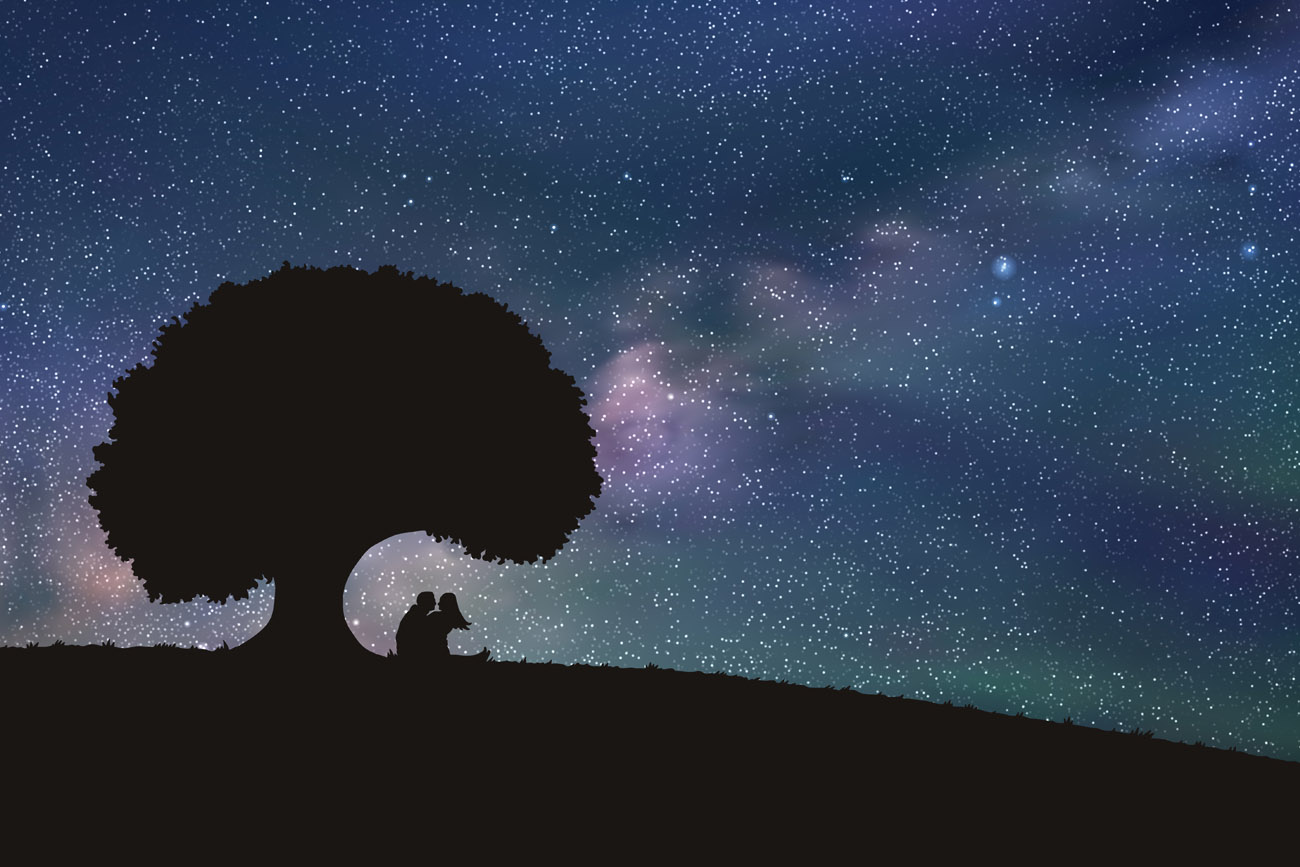
In Astrology, the signs influence more than your personality. They also determine how compatible you are with other people. How well will you get along with an archetypal Libra or Scorpio? Will you be friends or foe? Is love possible? Modern astrologers certainly think so. They believe that people with compatible signs will have a better chance at love and romance. To this day, “What’s your sign” remains one of the biggest romance clichés in pop culture.
As a rule, people get along better with others whose signs are the same element. An Aries, for instance, tends to get along better with a Sagittarius or a Leo, which are fire signs. People may also get along with those whose signs fall under a complementary element. Capricorns, whose element is Earth, get along well with Cancerians, whose element is water. People with opposing elements, meanwhile, may find it hard to get along.
But even true believers shouldn’t get too carried away with talk of destined soul mates. Even in astrology, sign compatibility is but a tool. You use it to manage expectations and responses to other’s behaviors. This applies whether the relationship is platonic or romantic. Think of it as a tool kit of what to expect when dealing with archetypal personalities. Know what to expect from a friend or prospective partner and adapt.
Popularity and Legacy
Though not considered reliable today, astrology still remains a popular diversion for many. Most people see it as a fun pastime. Others remain true believers. Whatever the case may be, the various traditions of astrology remain alive and well.
While skeptics have long believed that astrology would fizzle out in a more rational world, this has certainly not been the case. Western astrology gained its second wind in the New Age movement in the 60s and 70s. The astrological traditions of China and India remain as popular as ever within their communities.
By the end of the 20th Century, Astrology went back into obscurity. While it never really left, it became just another part of the background noise. Come the 2010s, it received yet another boost in popularity, fueled by the internet, social media, and mobile apps. Technological tools have removed the main hurdles of astrology. Calculations almost as complex as those of actual sciences could be done with relative ease.
The new astronomy fandom comprises mainly Millennial and Gen Z individuals, and with good reason. Astrology is an ideal topic for binging. It’s a wellspring of information with little barrier to entry. There’s a whole world of information just beneath your sun sign. Apps make it simple to condense even the most complex of factors involved.
The modern astrology fandom also grew up in a world of anxiety. Astrology provided a means of creating personality shorthands. They help young people make sense of the world in an easy to consume package. Then as now, this has been astrology’s main appeal. It isn’t always about whether they’re true believers. While astrology may not have any provable effect, the comfort it can give is very real.
Change privacy settings
